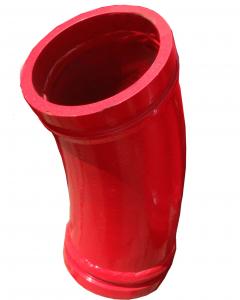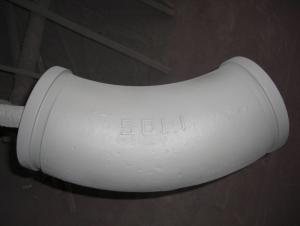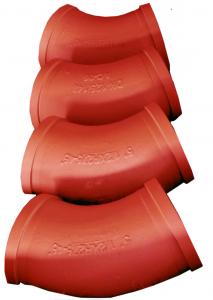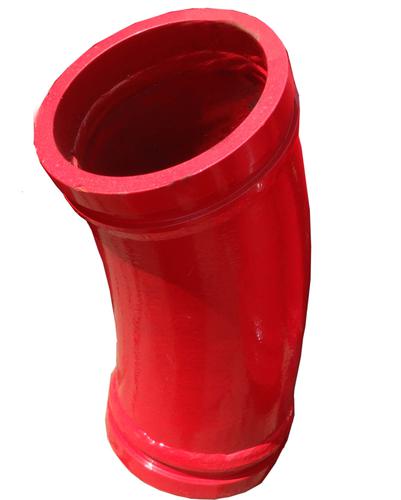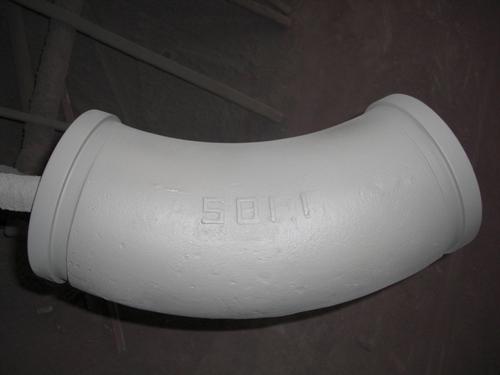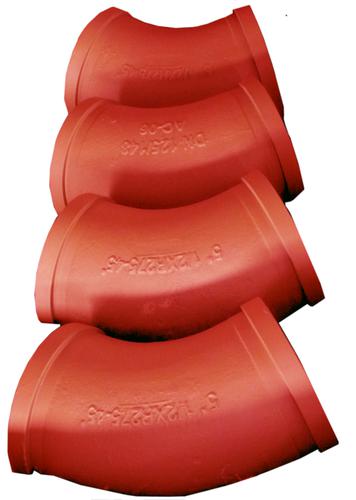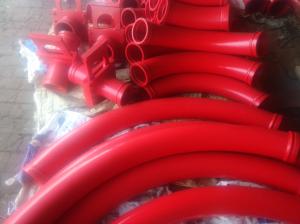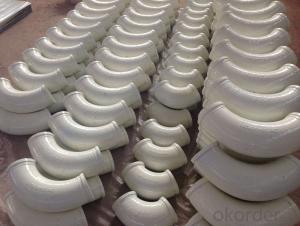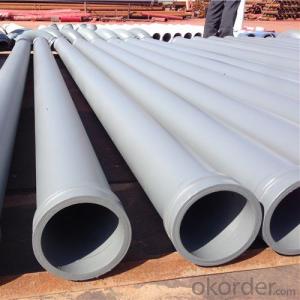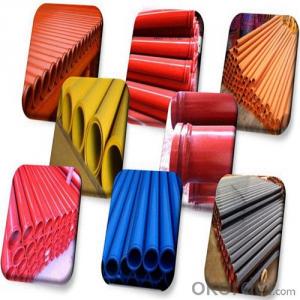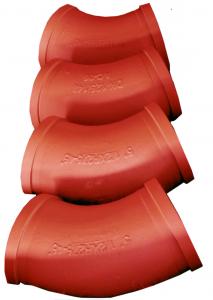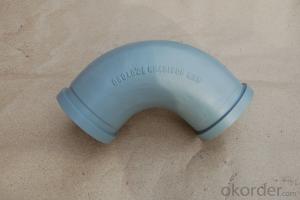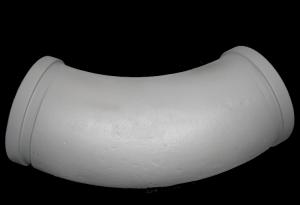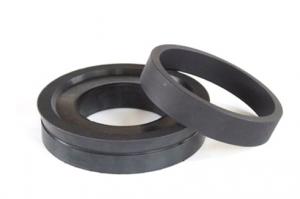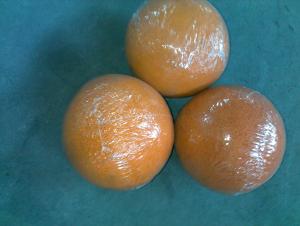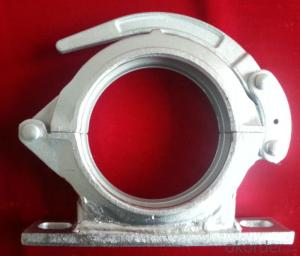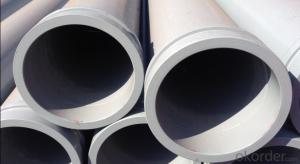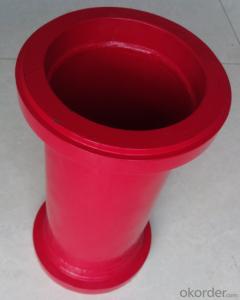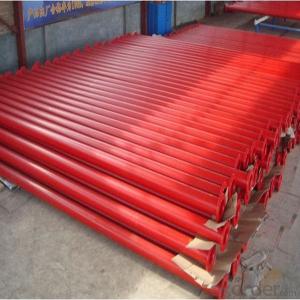Concrete Pump Truck Parts Elbow Bend DN125 R275 45DGR 148MM Mn13-4 Casting
- Loading Port:
- China Main Port
- Payment Terms:
- TT OR LC
- Min Order Qty:
- -
- Supply Capability:
- -
OKorder Service Pledge
Quality Product, Order Online Tracking, Timely Delivery
OKorder Financial Service
Credit Rating, Credit Services, Credit Purchasing
You Might Also Like
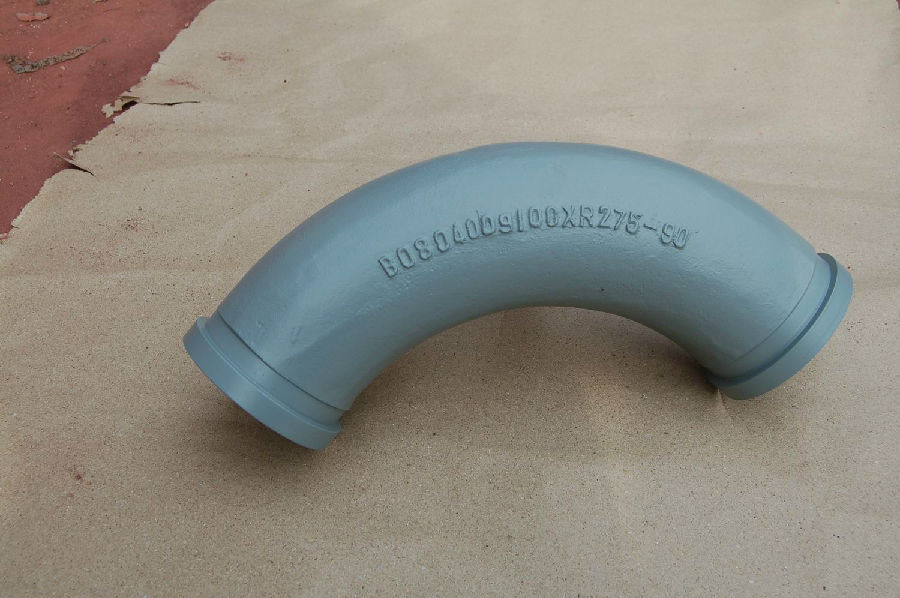
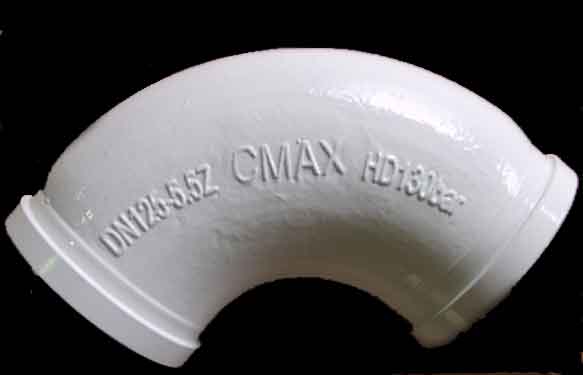
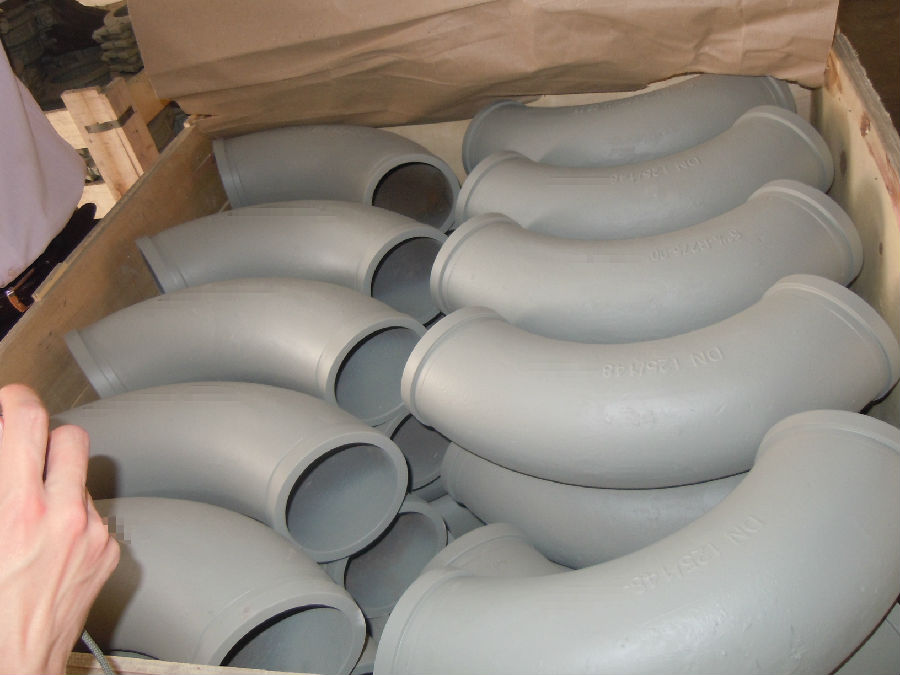
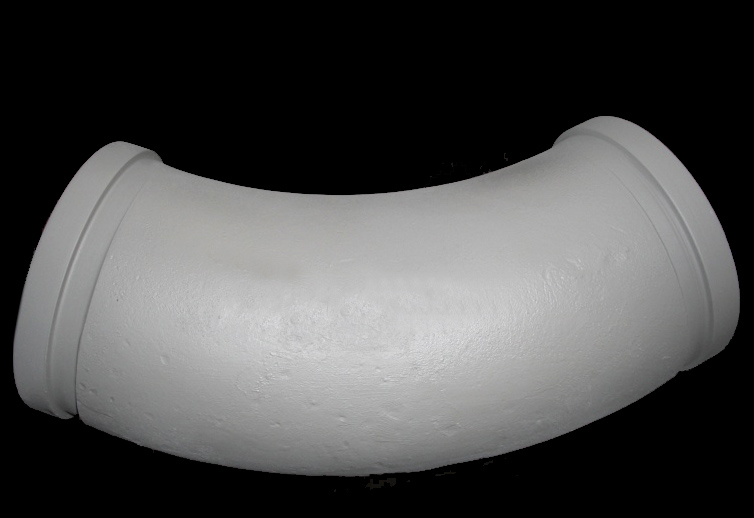
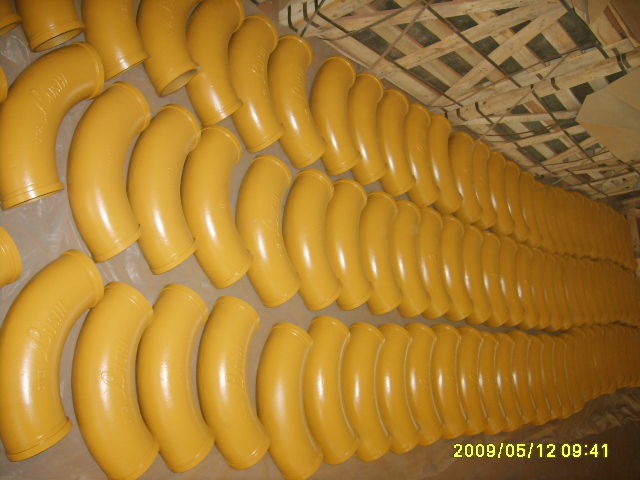
- Q: What are the different types of concrete pump hopper vibrators?
- There are two main types of concrete pump hopper vibrators: electric and pneumatic. Electric vibrators are powered by electricity and use an electric motor to generate vibrations. They are typically more powerful and efficient but require a power source. Pneumatic vibrators, on the other hand, are powered by compressed air and use air pressure to create vibrations. They are portable and do not require a power source, making them more suitable for remote or inaccessible areas.
- Q: What is the name of the pump for concrete transportation?
- The concrete name of concrete pump is concrete pump truck. Concrete pump truck is a kind of machine which can transport concrete along pipeline continuously by pressure. It is composed of pump body and conveying pipe.
- Q: What are the different types of concrete pump pistons?
- There are several different types of concrete pump pistons that are commonly used in the construction industry. These include: 1. Single-acting pistons: These pistons have one working side and are used in smaller concrete pumps. They push the concrete out of the cylinder during the forward stroke and rely on gravity to pull the piston back during the return stroke. 2. Double-acting pistons: These pistons have two working sides and are used in larger concrete pumps. They push the concrete out during the forward stroke and pull it back during the return stroke, increasing the efficiency of the pumping process. 3. S-tube pistons: These pistons are shaped like an S and are commonly used in trailer-mounted concrete pumps. They help to control the flow of concrete by directing it through a series of valves and pipes. 4. Rock valve pistons: These pistons are designed specifically for pumping concrete with larger aggregates. They have a rugged design that can handle the more abrasive nature of these types of materials. 5. Gate valve pistons: These pistons use a gate valve system to control the flow of concrete. They are commonly used in high-pressure applications and offer precise control over the amount of concrete being pumped. Overall, the type of concrete pump piston used will depend on the specific requirements of the construction project, including the size of the pump, the type of concrete being pumped, and the desired flow rate and pressure.
- Q: Can I get spare parts for both concrete pumps with and without agitators?
- Yes, you can get spare parts for both types of concrete pumps - those with agitators and those without. Many manufacturers and suppliers of concrete pumps offer a wide range of spare parts to ensure the smooth operation and maintenance of these machines. These spare parts include but are not limited to wear plates, cutting rings, delivery cylinders, pistons, seals, hoses, valves, and filters. It is recommended to contact the manufacturer or authorized dealers of the specific concrete pump brand you are using to inquire about the availability and pricing of spare parts for both types of pumps.
- Q: How to diagnose the blockage in the inlet of concrete pump?
- If it doesn't work, you'll have to clean it up manually and rule it out.
- Q: How often should concrete pump pistons be replaced?
- The replacement frequency for concrete pump pistons depends on several factors, including usage, maintenance, and piston quality. It is generally advised to regularly inspect the pistons for signs of wear and tear, such as cracks, pitting, or scoring. If any of these signs are detected, it is recommended to replace the pistons immediately to prevent potential failures or leaks. Concrete pump pistons typically last between 25,000 and 75,000 cubic yards of pumped concrete, although this can vary depending on specific conditions and operating practices. For example, if the concrete being pumped contains abrasive materials or if the pump is used intensively or under harsh conditions, the pistons may wear out more quickly. Furthermore, proper maintenance practices can prolong the lifespan of the pistons. This includes regular cleaning and lubrication, maintaining the pump in good condition, and ensuring the pistons are correctly aligned and not subjected to excessive pressure or stress. In conclusion, closely monitoring the condition of the pistons and referring to the manufacturer's recommendations or seeking advice from a professional is essential to determine the appropriate replacement interval for the specific concrete pump being utilized.
- Q: How can one determine the correct pressure and flow rating for hydraulic components in concrete pump spare parts?
- To determine the correct pressure and flow rating for hydraulic components in concrete pump spare parts, one must consider the specific requirements and specifications of the concrete pump system. This involves understanding the maximum pressure and flow requirements of the pump, as well as considering factors such as the type and size of the concrete being pumped, the distance and height of the pumping operation, and any additional attachments or accessories being used. It is crucial to consult the manufacturer's guidelines and recommendations, as well as seek advice from hydraulic experts, to ensure the hydraulic components are properly selected for optimal performance and efficiency.
- Q: What are the safety measures to consider while replacing concrete pump spare parts?
- When replacing concrete pump spare parts, there are several important safety measures to consider. Firstly, it is crucial to ensure that the pump is turned off and all power sources are disconnected before beginning any work. Additionally, wearing appropriate personal protective equipment, such as gloves, safety glasses, and steel-toed boots, is essential to protect against potential hazards. It is important to follow the manufacturer's guidelines and instructions for replacing the specific spare part to ensure proper installation and prevent accidents. Lastly, maintaining a clean and organized work area, free from clutter and debris, can help prevent trips and falls while working on the pump.
- Q: How can the concrete pump pipe be cleaned?
- Take some concrete out of the first straight pipe and connect with the air wash joint. The joint shall be filled with sponge balls soaked in water. The inlet, the exhaust valve and the compressed air hose shall be installed on the joint.
- Q: What are the indications of a weak or dead remote control battery?
- The indications of a weak or dead remote control battery can vary depending on the type of remote control being used. However, some common indications include a noticeable decrease in the range or distance at which the remote control can operate. This means that you may need to be closer to the device you are trying to control in order for the remote to work properly. Another indication is when the remote control buttons become unresponsive or require multiple presses to function. You may also notice a delay in the response time of the device when using the remote control. In some cases, the remote control may stop functioning altogether, indicating that the battery is completely dead. If you experience any of these signs, it is recommended to replace the battery in the remote control to ensure reliable performance.
Send your message to us
Concrete Pump Truck Parts Elbow Bend DN125 R275 45DGR 148MM Mn13-4 Casting
- Loading Port:
- China Main Port
- Payment Terms:
- TT OR LC
- Min Order Qty:
- -
- Supply Capability:
- -
OKorder Service Pledge
Quality Product, Order Online Tracking, Timely Delivery
OKorder Financial Service
Credit Rating, Credit Services, Credit Purchasing
Similar products
Hot products
Hot Searches
Related keywords
